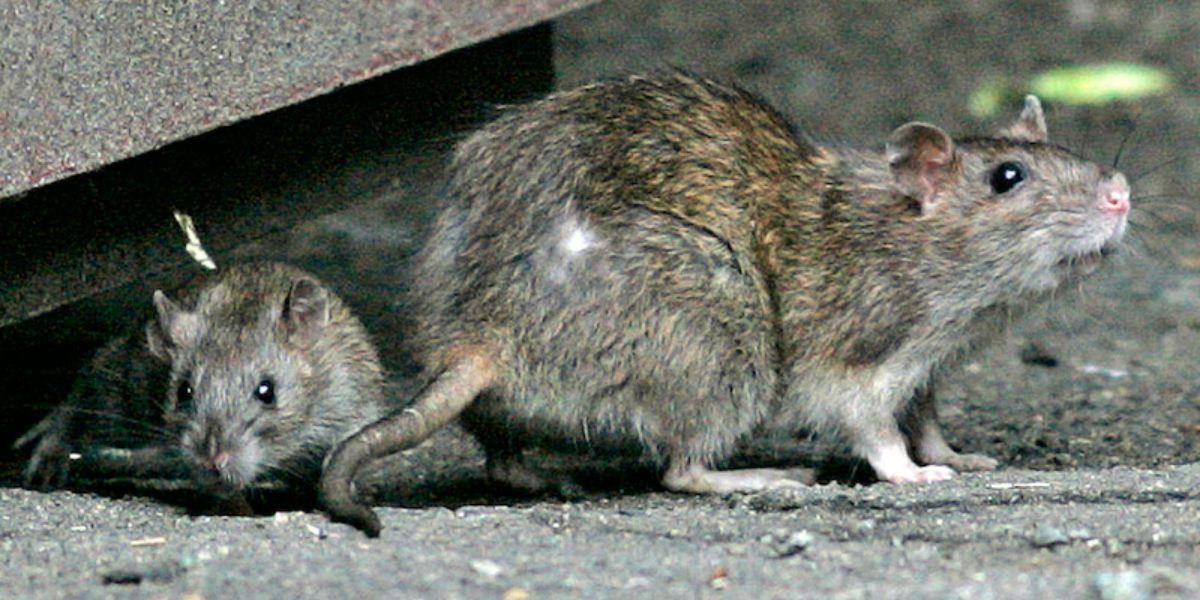MJP –
It’s a title no city wants to claim, but this year, Cleveland, Columbus, and Cincinnati have found themselves among the top 50 “rattiest” cities in the United States, according to a new report from Orkin, a leading pest control company.
The ranking, which measures cities by the number of rat sightings and pest control treatments performed, shines a spotlight on the rodent problem in these Ohio cities, signaling a growing urban issue that many city officials and residents are working hard to address.
The list, which is compiled annually, takes into account data from both residential and commercial rodent control requests in 2023. Despite efforts from local governments and pest control professionals to keep these cities clean and safe, Cleveland, Columbus, and Cincinnati have ranked higher than many other cities, underscoring the persistent issue of rat infestations in some urban areas.

Let’s dive into why these Ohio cities have earned a spot on the “rattiest” list, the challenges they face, and what steps are being taken to control the rat population.
Cleveland: Battling an Urban Rodent Problem
Cleveland has long been an industrial hub, but it is also a city that faces growing challenges with waste management, aging infrastructure, and poverty—issues that contribute to the rise of rat populations.
Why Cleveland?
Which California 4 Cities Are Among the ‘Most Rat-Infested’ in the Country?
Several factors contribute to Cleveland’s ranking as one of the “rattiest” cities in the U.S.:
- Old Infrastructure: Cleveland is home to many old buildings and crumbling infrastructure, such as cracked sidewalks and broken sewer lines, which provide ideal hiding spots for rats. These underground systems, in particular, create a perfect environment for rats to breed and scurry through the city unnoticed.
- High Population Density: Like many major cities, Cleveland has a high population density. More people means more food waste, trash, and potential food sources for rats, particularly in residential areas, restaurants, and bars.
- Poverty and Homelessness: Cleveland, like many rust-belt cities, faces economic challenges, and the prevalence of homelessness can exacerbate rat infestations. Areas with large homeless populations often accumulate food waste, which attracts rodents.
In recent years, the city has stepped up its rat control efforts, with the Cleveland Department of Public Health launching initiatives to clean up vacant lots, improve trash management, and educate residents on preventing rodent infestations. While these efforts are promising, eradicating rats from urban areas remains a tough battle.
Columbus: A Growing Concern in Ohio’s Capital
Ohio’s state capital, Columbus, has earned its spot on the “rattiest” list due to similar factors that plague many major cities: rapid growth, high density, and challenges with waste management.
Why Columbus?
Several key factors contribute to the rise in rat populations in Columbus:
- Urban Sprawl and Construction: As Columbus continues to grow, there has been an increase in construction and urban sprawl. New developments disturb the habitats of rats, forcing them to relocate into nearby residential neighborhoods in search of food and shelter. Construction debris and temporary gaps in urban infrastructure make it easier for rodents to infiltrate these areas.
- Inconsistent Waste Collection: Although Columbus generally has a good waste management system, certain areas of the city still struggle with overflowing trash bins and inconsistent pickup. This creates food sources for rats, particularly in older or more densely populated neighborhoods.
- Climate: Ohio’s climate, with cold winters and humid summers, provides the perfect environment for rats to thrive year-round. During the colder months, rats seek shelter indoors, making homes and businesses prime targets for infestations.
City officials in Columbus have responded by expanding rodent control programs and offering assistance to businesses and homeowners dealing with infestations. Public awareness campaigns on proper trash disposal and rat-proofing homes are also part of the strategy to keep rat populations in check.
Cincinnati: The Queen City’s Persistent Rodent Problem
Cincinnati, often celebrated for its rich history and vibrant neighborhoods, has also found itself struggling with rat infestations, ranking alongside Cleveland and Columbus in the Orkin survey.
Why Cincinnati?
Cincinnati faces several issues that contribute to the ongoing rat problem:
- Aging Infrastructure: Much like Cleveland, Cincinnati’s infrastructure is aging, with cracks in sewer lines, sidewalks, and alleyways that create perfect access points for rats. The city’s many historic buildings and older homes are often susceptible to rat infestations because of these structural vulnerabilities.
- High Rat Activity in Certain Neighborhoods: Areas near the Ohio River, commercial districts, and neighborhoods with a lot of foot traffic are hotspots for rats. These areas often attract rats looking for food and shelter, and high levels of human activity can lead to more garbage and food waste left out in public spaces.
- Waste Management and Sanitation Issues: Although the city has made significant strides in waste management, overcrowding in certain areas can still lead to problems with trash, especially in neighborhoods with high levels of commercial activity and less frequent trash collection.
In response to the rat issue, Cincinnati has increased its rat control measures, including better trash management practices, public education on proper waste disposal, and enhanced pest control efforts. The city is also focusing on increasing green spaces and repairing aging infrastructure, which could help reduce the number of places where rats can nest.
Why Do Rats Thrive in These Cities?
Rats are opportunistic creatures, and cities like Cleveland, Columbus, and Cincinnati provide the perfect combination of food, shelter, and water for them to thrive. The following factors contribute to the rat problem in these cities:
- Waste: Overflowing trash cans, food waste, and litter are the primary food sources for rats. In densely populated areas, these conditions are exacerbated by higher levels of human activity, providing ample opportunities for rats to find meals.
- Climate: The temperate climate of Ohio allows rats to thrive year-round. They are especially active during the colder months, when they seek shelter indoors.
- Urban Infrastructure: Older buildings, cracked sewer lines, and neglected alleyways offer ideal hiding places for rats. Urban sprawl and ongoing construction also disturb rat habitats, forcing them to seek new areas to live.
- Homelessness and Poverty: Areas with large homeless populations and poverty-stricken neighborhoods tend to have more litter, discarded food, and places for rats to shelter.
What Are Cities Doing to Combat the Rat Problem?
In response to the rising rat populations, Cleveland, Columbus, and Cincinnati have implemented a variety of measures to curb infestations:
- Improved Waste Management: More frequent trash pickups, better waste bin infrastructure, and initiatives to reduce food waste are being implemented to eliminate one of the primary food sources for rats.
- Rodent Control Programs: Local governments are working with pest control services to help property owners address infestations. Public works departments are also increasing the use of traps and bait stations in high-traffic areas.
- Infrastructure Repair: Cities are repairing cracked sidewalks, potholes, and sewer lines, which provide easy access for rats. Increased investment in infrastructure is seen as a key part of long-term solutions.
- Public Education Campaigns: Local officials are encouraging residents and businesses to keep trash secured, seal entry points to buildings, and report signs of rat activity early. Educational campaigns are helping communities become more proactive in preventing infestations.
Conclusion: Ohio’s Rat Struggle
While being ranked among the “rattiest” cities in America is far from flattering, Cleveland, Columbus, and Cincinnati are not alone in facing the challenge of rat infestations. Cities across the country are grappling with similar issues as urbanization, waste management problems, and climate conditions create ideal habitats for rodents.
By improving waste management, repairing infrastructure, and increasing pest control efforts, these Ohio cities can work toward reducing their rat populations. With continued focus and collaboration between local governments, businesses, and residents, Cleveland, Columbus, and Cincinnati can hope to keep their streets cleaner and safer in the future.




